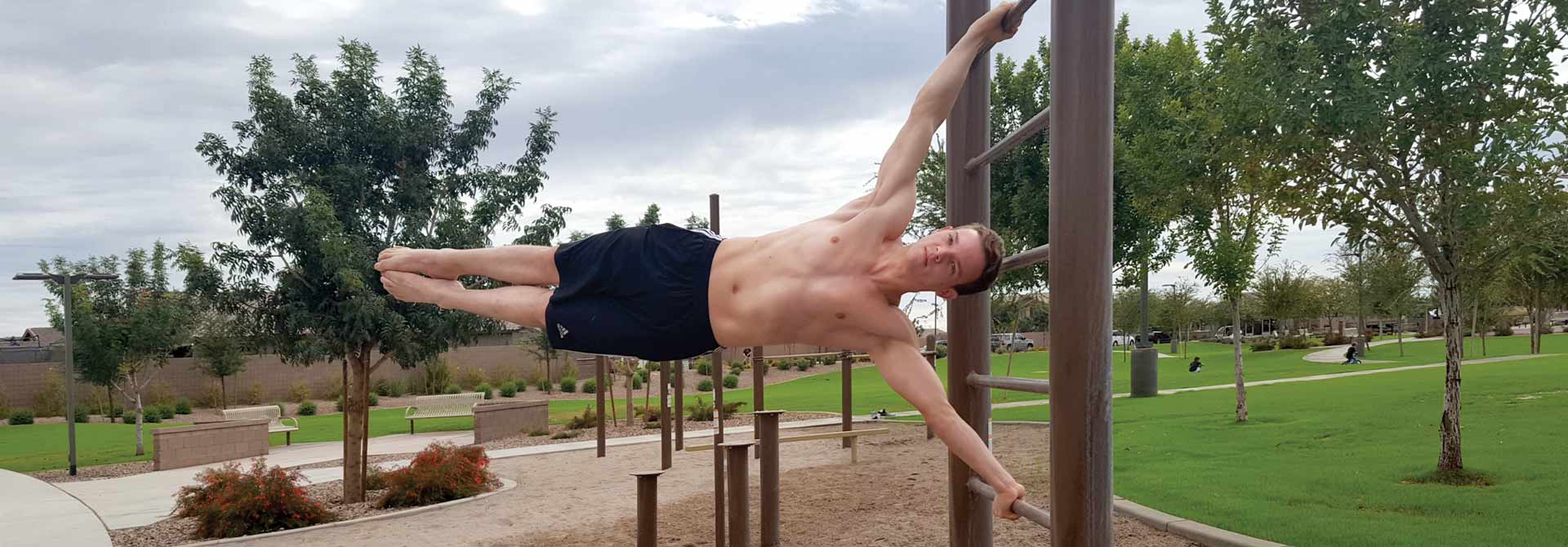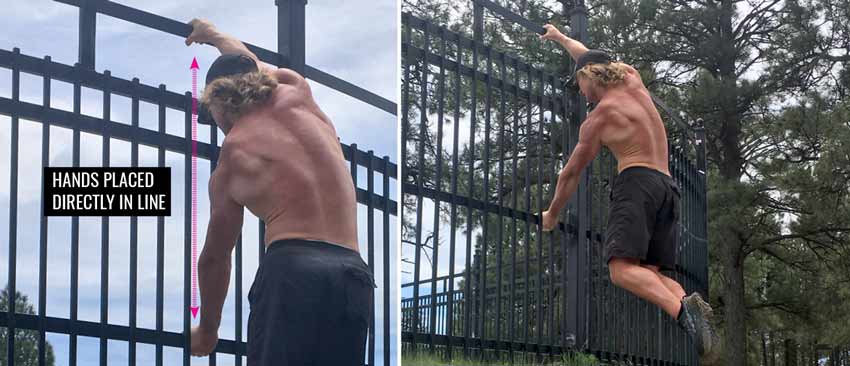Let Your Human Flag Fly

Side Levers provide a unique training stimulus for the body, making it a cornerstone skill worthy of achieving. The Side Lever is commonly referred to in calisthenic circles as the Human Flag and is extremely popular for bodyweight-based strength fanatics – making it a visible feat shared across the world of social media.
It also happens to be one of the seven fundamental exercises that students work towards using the GB Foundation Series. In developing your Side Lever, you are simultaneously training your pushing AND pulling strength from the shoulders and upper back, while you are both stretching AND strengthening your obliques. There’s a lot going on here, and a lot to be gained in basic fitness pursuits when training for it. That’s why our students and athletes find it so challenging AND rewarding, because really, who doesn’t want to develop an oblique-ready beach bod?
No other movement is quite like the Side Lever, giving most calisthenic fans absolutely no idea where or how to begin training for it. Don’t make the same mistake, and train smarter! You will, no doubt, find success in your flag development through the core progressions in our Foundation Series.
Baby Steps
Keep in mind that Side Levers are a combination of straight-arm strength (strength movements that require completely straight arms), back and shoulder girdle strength, and core stability, areas which most adults are either weak in, or do not prioritize before jumping on a bar and giving it a go. You should absolutely learn basic oblique training (click the previous blog link to learn more), before attempting a full Human Flag. Your body needs to be prepped for it; like anything worth having, it’s worth the consistent work to get there.
This block position is literally what builds the foundation for your eventual flag. Spending time in this position is worth the effort!
I’m Prepped and Ready To Go! So, How do I do it?
The first place to begin is the set up with the positioning known as the Side Lever Block. Stand in front of a set of stall bars, vertical pole, playground equipment, or any other sturdy horizontal set of bars – even barbells that are completely secured will suffice. Grab your bottom bar in an underhand grip, just below waist height, and with your top hand, reach overhead and grab the upper bar with the opposite, overhand grip. Your hands should be about at least twice shoulder-width apart. Feel free to adjust slightly as necessary to suit your unique lever lengths and physiology. On a vertical bar, you will know you are in the right position when both of your thumbs are facing down.
Now The Work Begins
With a firm grip on both the upper and lower bars, PULL with the top arm and PRESS with the bottom arm at the same time. This precise combination of both pulling and pressing provides the needed core stability for the body to remain still while being suspended horizontally in a Side Lever hold.
Remember, this is a static, still position, so once you get horizontal, squeeze everything, stay tight, and hold fast for the desired amount of time.

Still Struggling? Troubleshooting Tips:
The biggest hurdle in the execution of the Side Lever is usually a proper setup. Don’t fret. This is just a sign that:
- You simply need a little more physical preparation before you re-attempt this movement.
- You need more practice in order to learn how to “fire” the correct muscles at the correct time in your setup.
- If you can get into a horizontal flag position, and you still collapse into the bars, then you need to spend more time developing your straight-arm and oblique strength with exercises like side plank twists and twisting arch-ups.
- Once you get into your Side Lever Block position and are somewhat able to hold it, but just have difficulty staying still without rotating or twisting, then you might just need to spend more time practicing your setup and entry in order to refine it. The largest common setup mistake is accidentally grabbing the bars in a diagonal line.
Side Levers provide the body with a unique training stimulus of simultaneously pushing, pulling, stretching, and strengthening at the same time. Find out more about how you can prepare specifically for your Side Levers with step by step progressions in the Gymnasticbodies Foundation Series.

